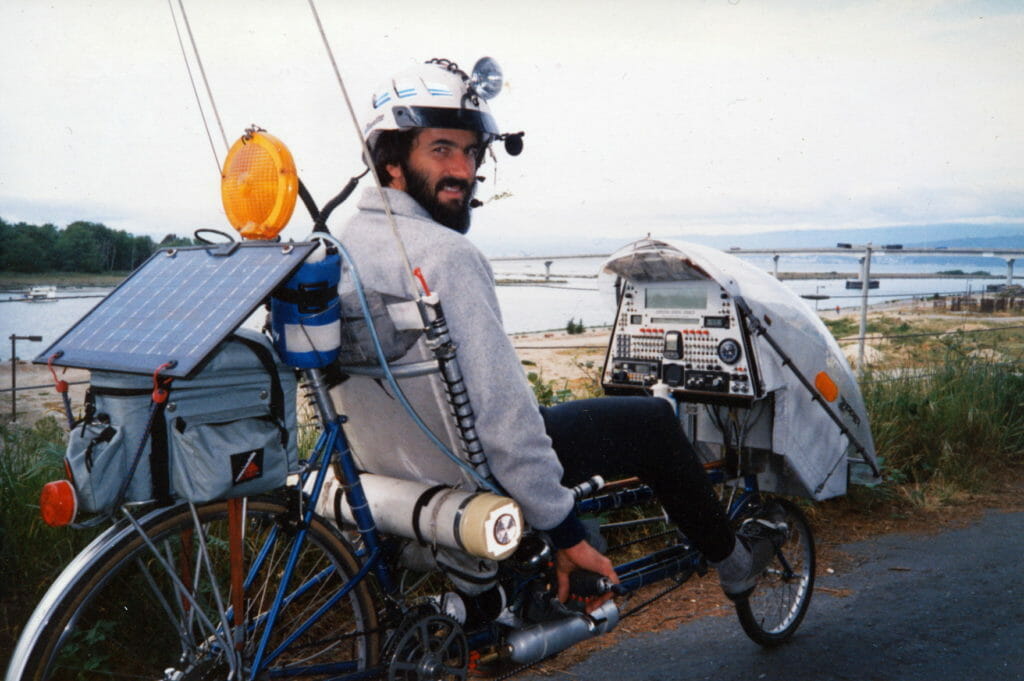"High-tech nomad" pedals 17,000 miles on a computerized bicycle
There were three versions of the bike that enabled my life as a technomad — from the simple system that propelled me out of Ohio in 1983 to the $1.2 million beast built over three years in a Silicon Valley lab with a team of volunteers. All were state-of-the-art machines for mobile connectivity, and were much more than personal tools for reaching escape velocity. Click each photo for more details including links to media, design documents, and adventure tales...
Winnebiko: Computing Across America (1983-1985)
This was the dawn of digital nomadics. In 1983, the very idea was bizarre: a guy on a bicycle, using portable computers and networks to run a business while moving? That's crazy talk.
But the media fell in love with this machine, and I wrote a book called Computing Across America about the rollicking, high-tech adventure that carried me 10,000 miles around the United States. What I thought would be a "bicycle tour" quickly became a career, and this dovetailed perfectly with the rise of laptops and online services... which were my essential tools, along with a custom recumbent and solar panels.
Winnebiko II: Miles with Maggie (1986-1988)
What fun is a computerized bicycle if you can't write while riding? That was the original design goal for this new version, which also included packet data communications via ham radio. The combination led to the first "texting while driving," along with new frontiers in nomadic connectivity that were beginning to render my physical location irrelevant.
BEHEMOTH: Big Electronic Human-Energized Machine… Only Too Heavy (1989-1991)
It was inevitable. Extrapolating from the first two, I had no choice but to build a geek extravaganza of mobile computing tools. Estimated at $1.2 million, the 3-year project hosted by Sun Microsystems integrated multiple computers, satellite communications, heads-up display, head mouse, multimode ham station, speech synthesis, cellular, and lots more into a 580-pound, 105-speed monster. The bike had become a unixcycle... and now resides in the Computer History Museum.









You must be logged in to post a comment.